Sewell & Jones 11 Abandonment
Clampitt 11 was drilled in 1917. After the Sewell & Jones Company took over it became Sewell & Jones 11. It is located in Elsmere Canyon near the bottom of the creek above the large tank (which was not trashed).
Since the well site is located so near the parking area, it was the easiest well for me to get to. Consequently, I was able to be there more often and take more photos then at the other sites. However, due to the lateness of the day, there were a lot of shadows to contend with.
From the DOGGR abandonment report from Excalibur Well Services, here is what was done:
12/20/11: Rig up 1.5" coil unit and cement equipment. Run in hole with 1.5" coil and tag at 460'. Pull out of hole and install bullet tool. Run back in hole pumping water and tag at 460', could not get past. Clean out tag at 460'. Mix and pump 170 cubic feet of class G cement and pull out of hold. Top of cement at 148'.
12/21/11: Run in hole with 1.5" coil and tag at 431'. Mixed and pumped 140 cubic feet of class G cement. Pull out of hole and wait 2 hours. Run back in hole with 1.5" coil and tag at 312'. Mix and pump 120 cubic feet of cement until return truck was full. Pull out of hole and wash up equipment.
12/12/11: Run in hole with 1.5" coil and tag at 161'. Mix and pump 100 cubic feet of class G cement, wash up equipment and pull out of hole.
12/27/11: Run in hole with 1.5" coil and tag at 25', mix and pump 20 cubic feet of cement to surface.
12/30/11: Surface crew dug up and cut off well head. No top off needed.
12/28/11: Dumped 50 lineal feet of zonite down well. Rigged up 1" hose to well and pumped 155 cubic feet of class G cement in 2 stages waiting 1 hour in between stages. Cement at surface in casing and well bore.
1/9/12: Surface crew back filled and restored location.
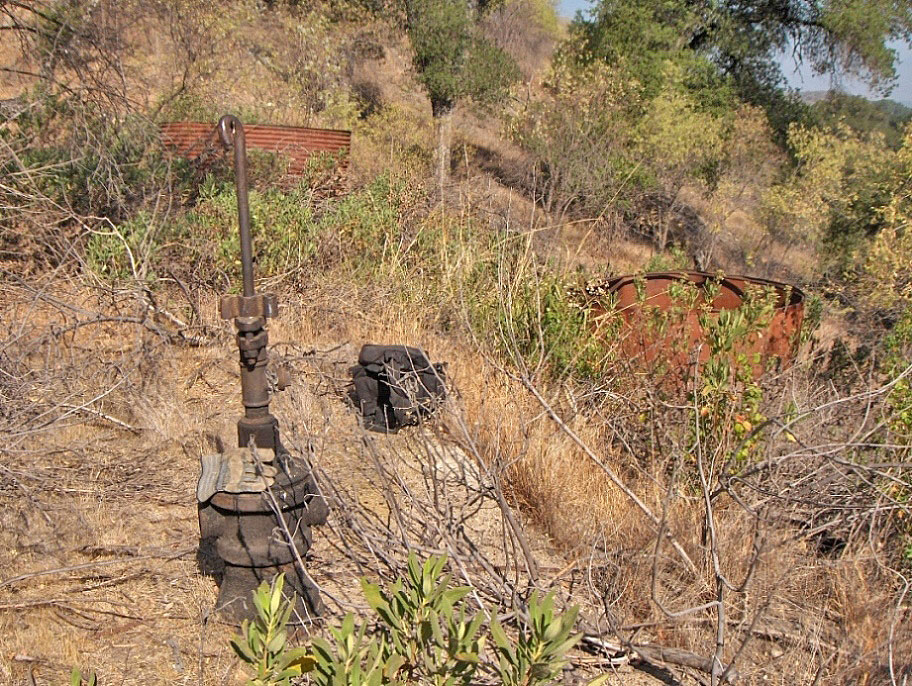
The well site on 7/7/2008
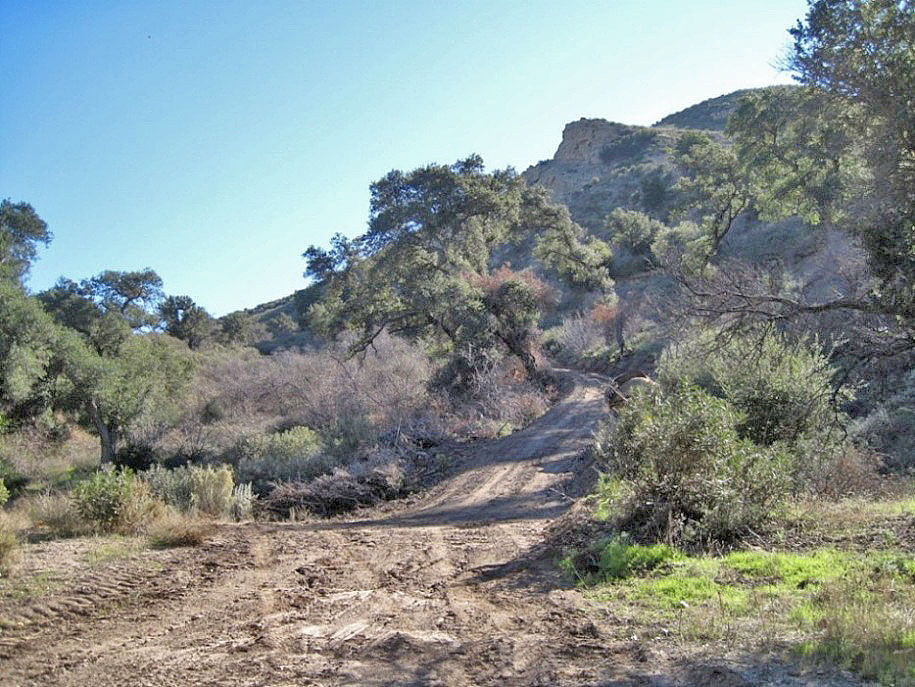
A new road was graded up to the well site from the creek bed. The original road to the site came in from the east (left side of photo). Due to a young oak tree, it was decided to come in this way instead of cutting down the tree. (11/26/2011)
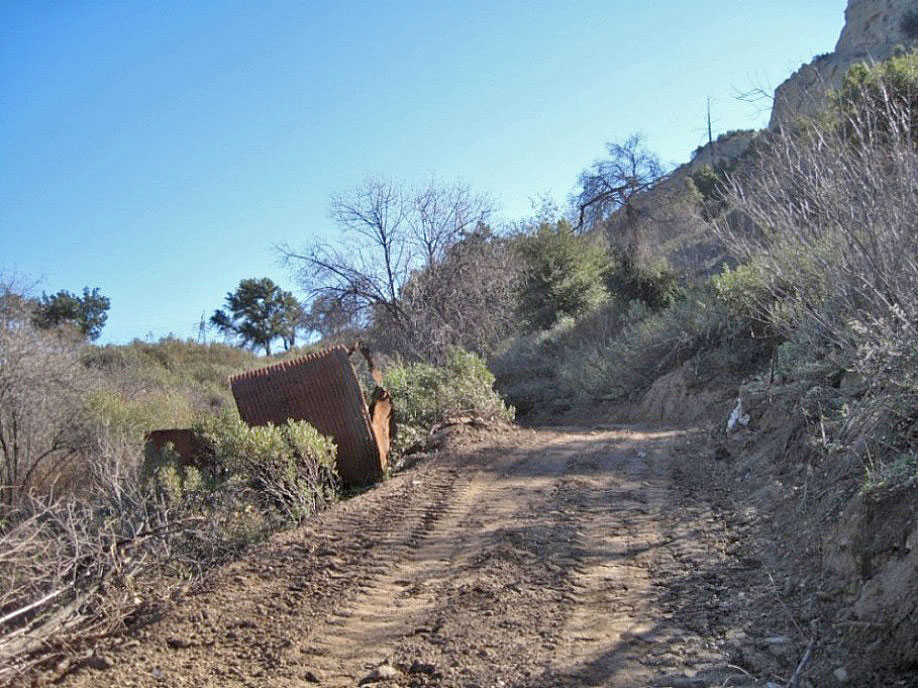
The new road had to pass through a tank and cement bases (11/26/2011)
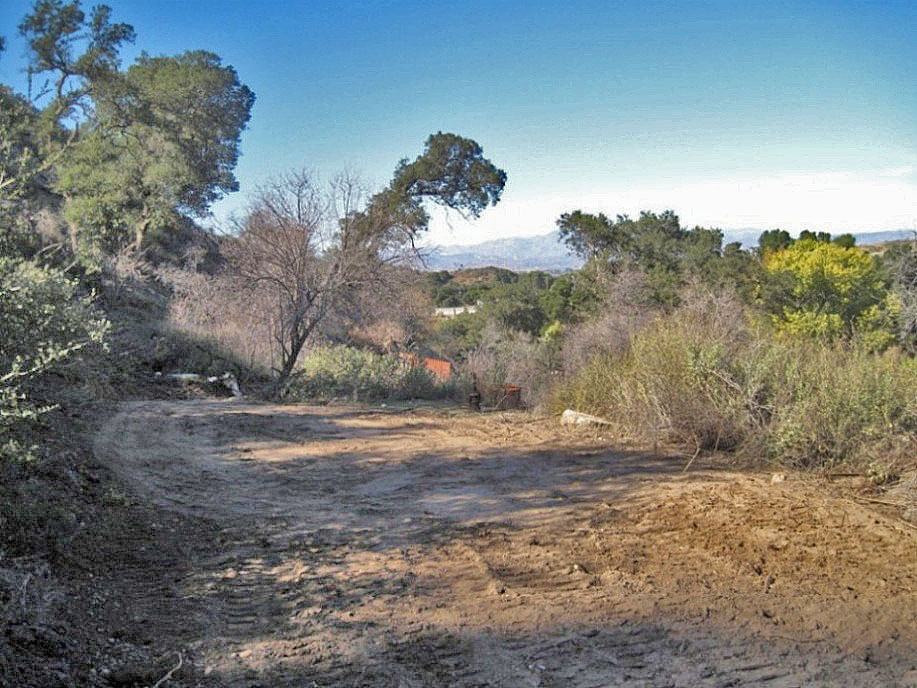
At the well site (11/26/2011)
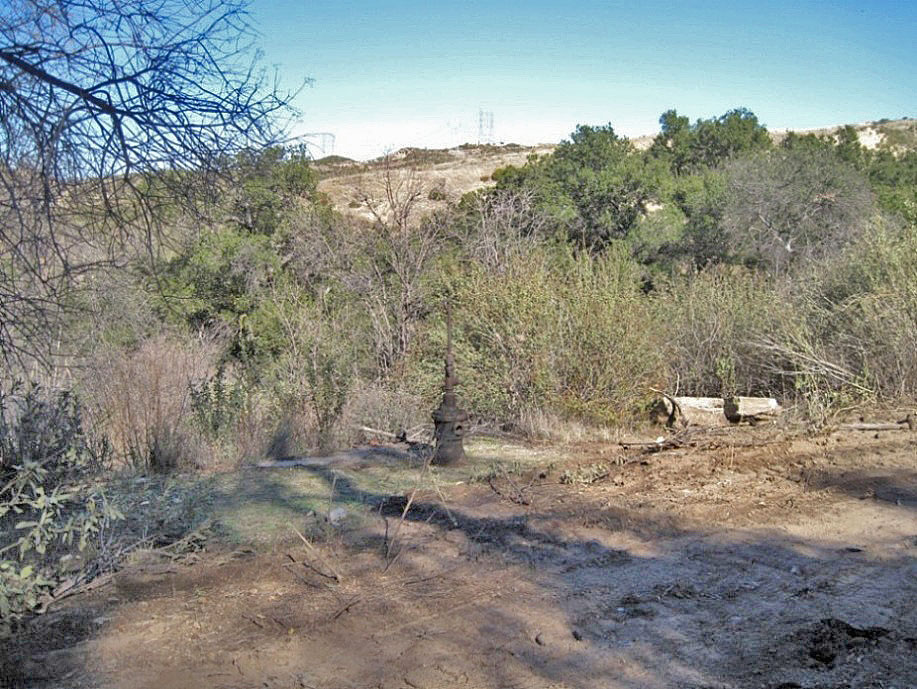
Closer view of well head (11/26/2011)
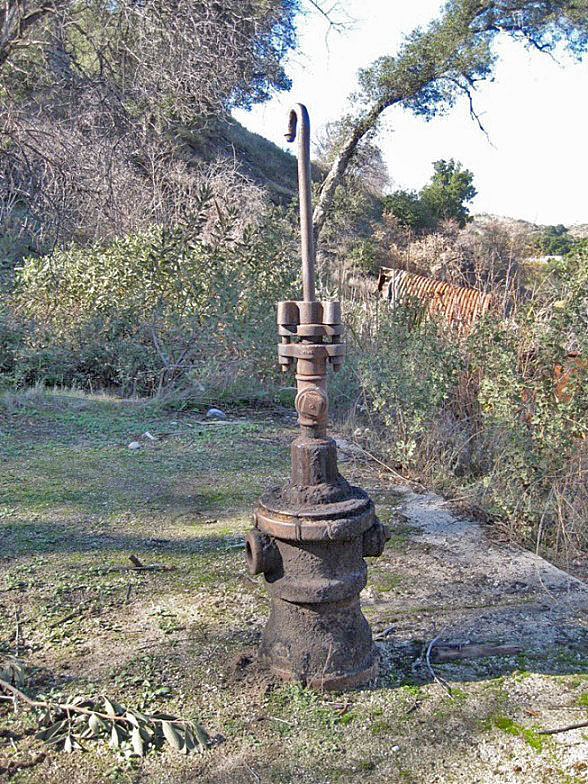
Well head (11/26/2011)
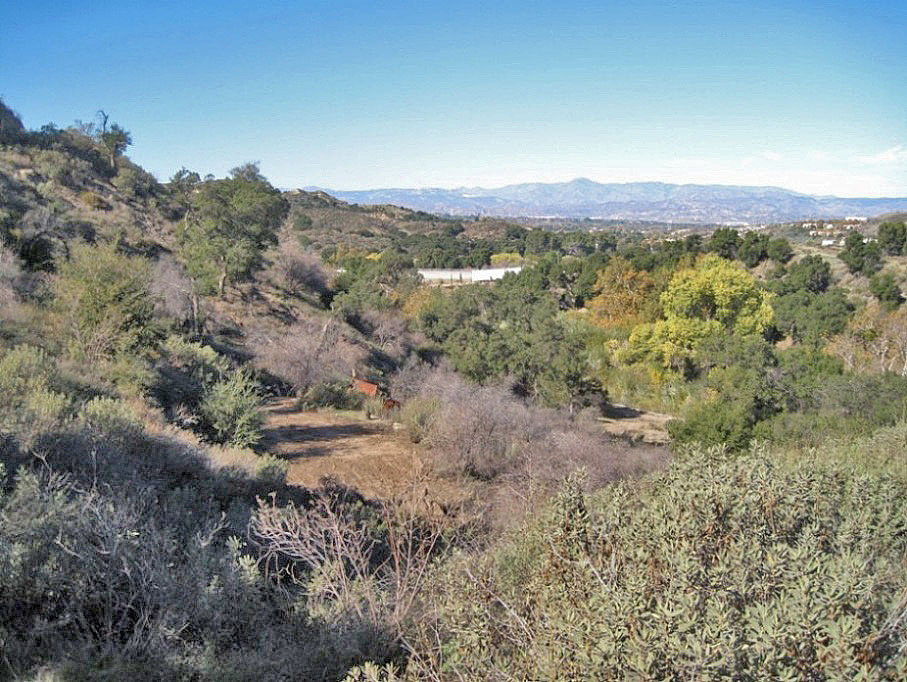
Higher up view towards the northwest (11/26/2011)
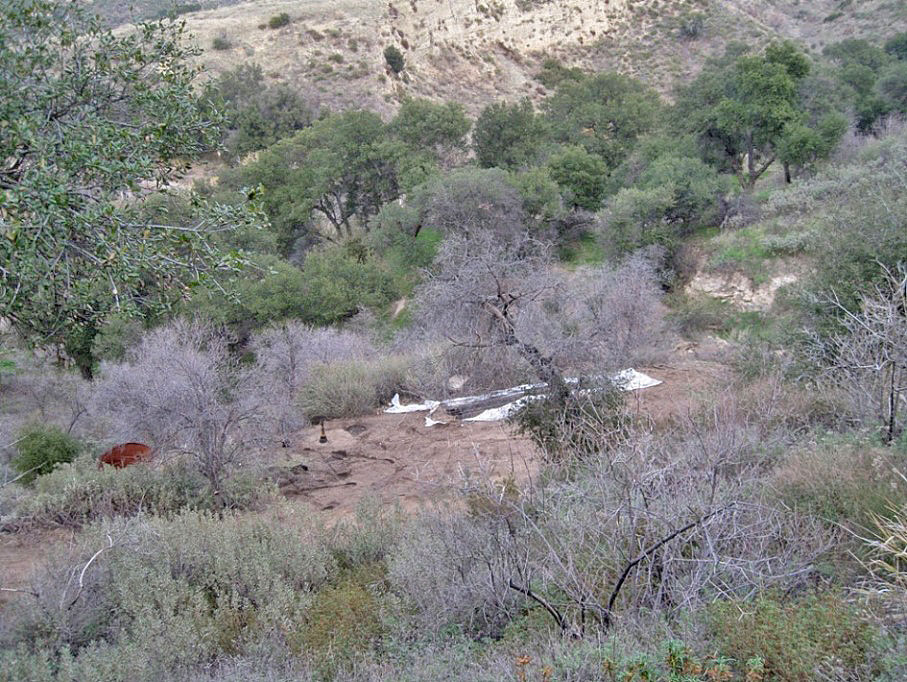
First work done was to pull out the old casing (12/19/2011)
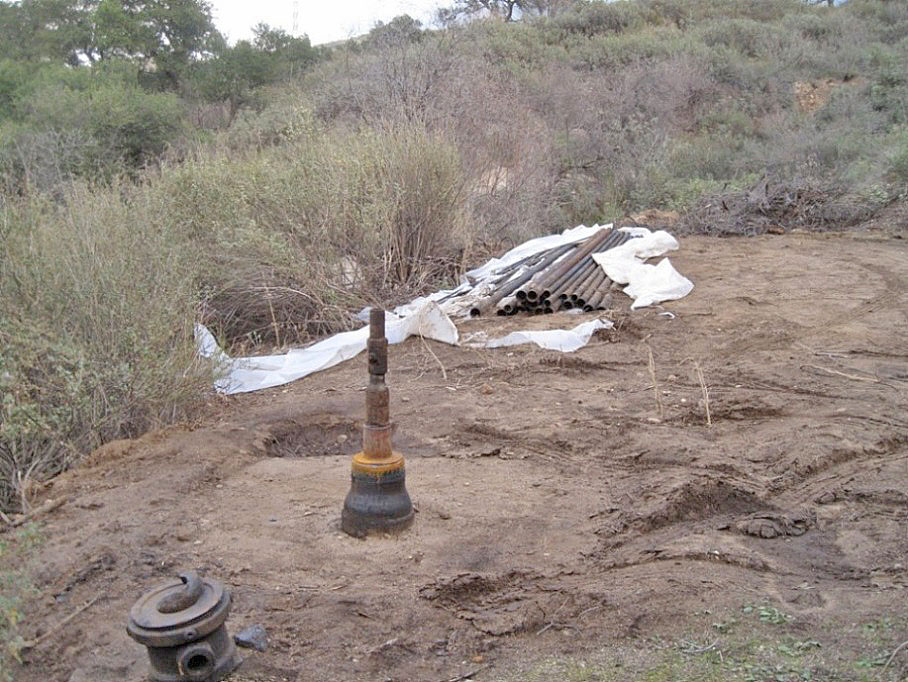
Much of the hardware has been removed from the well head. (12/19/2011)
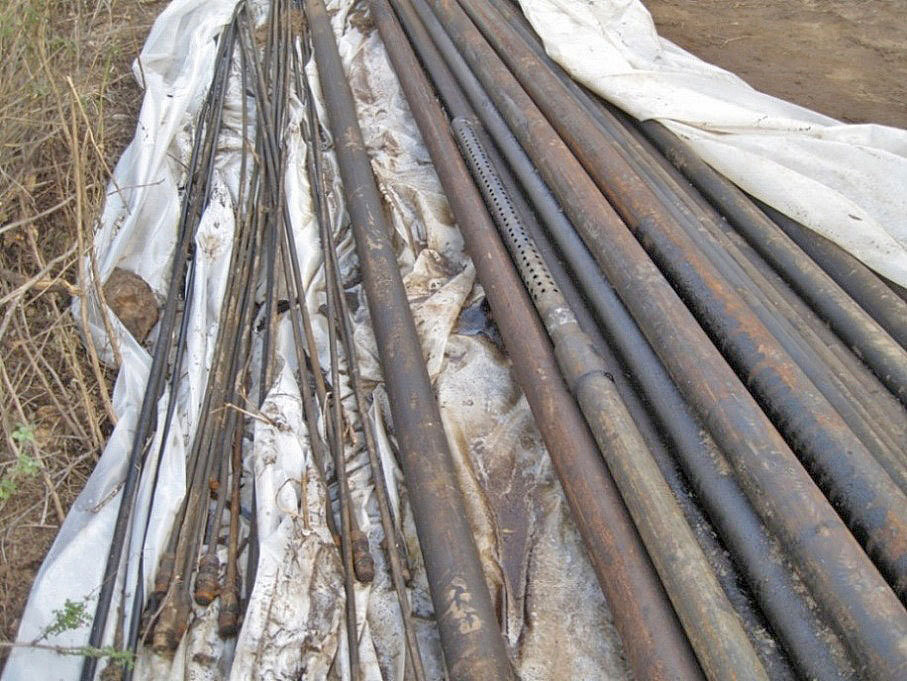
Sucker rods on left, casing on right. Sucker rods are used to pump the well. (12/19/2011)
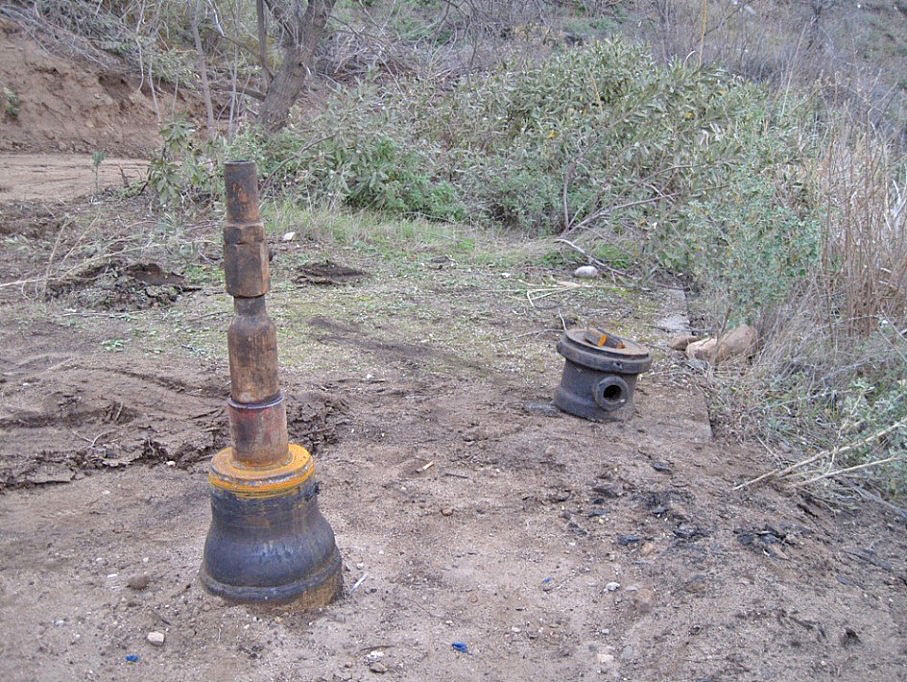
Well (12/19/2011)
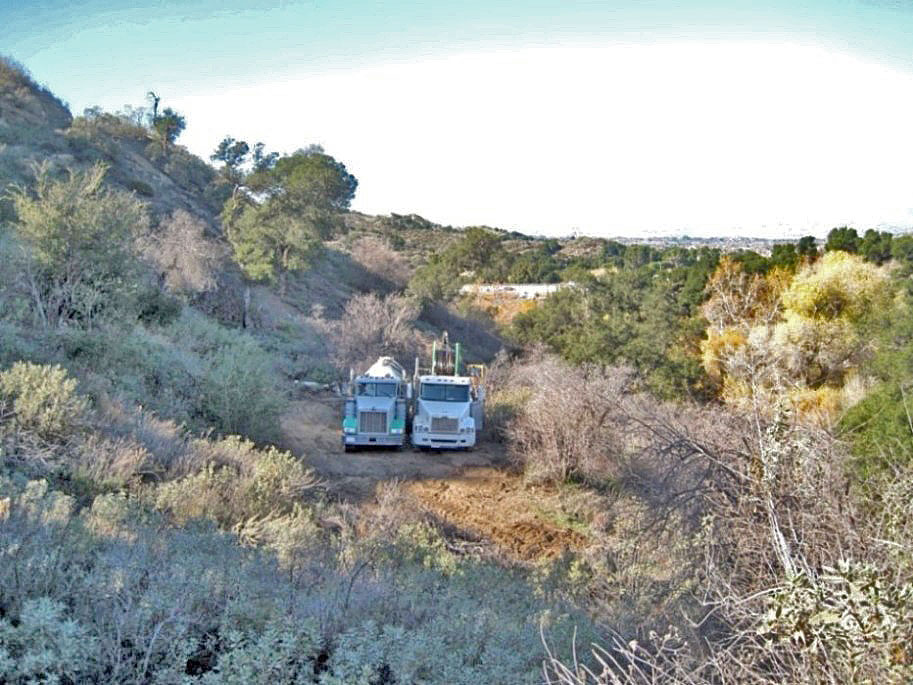
Coiled Tubing truck (on right) and water truck at site (12/20/2011)
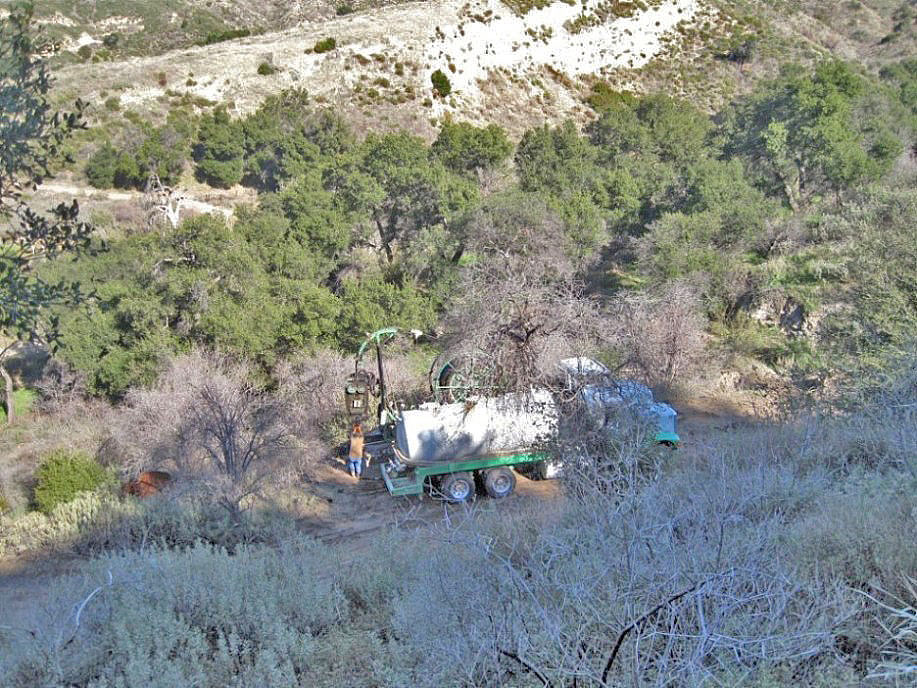
Work being done (12/20/2011)
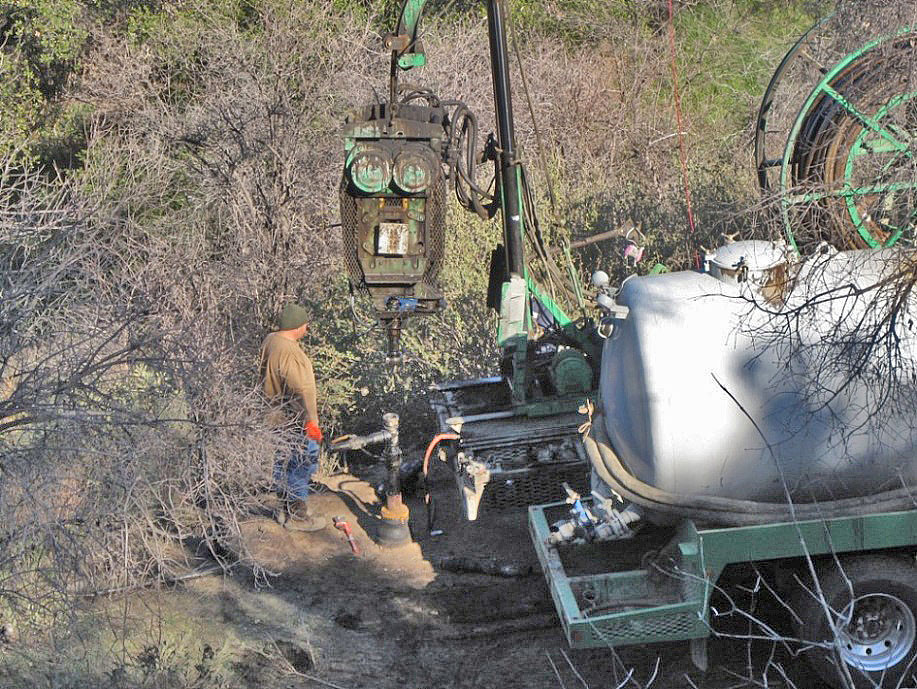
(12/20/2011)

(12/20/2011)
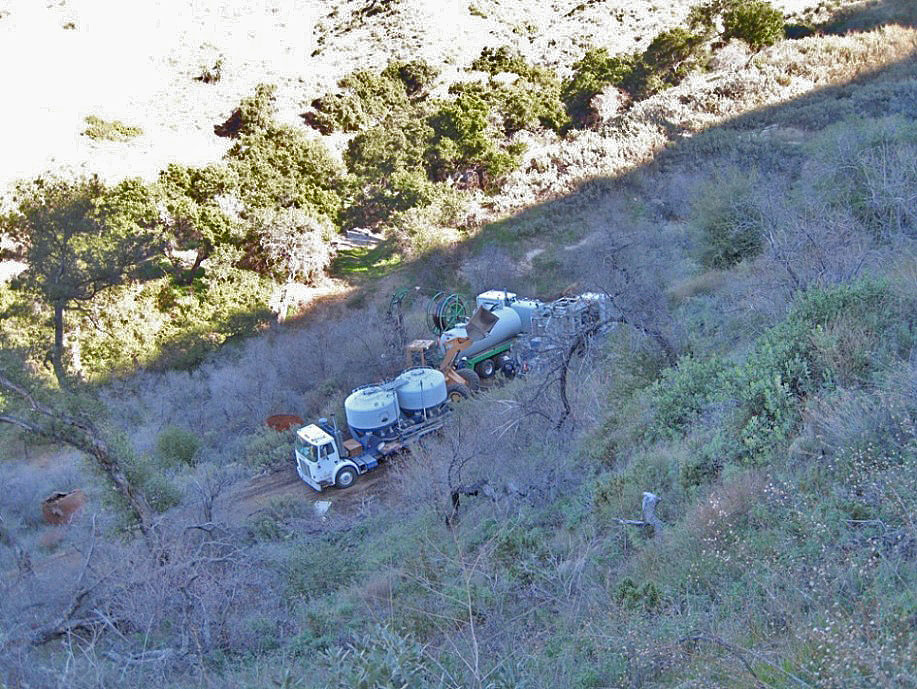
Bulk cement truck now on site (12/20/2011)
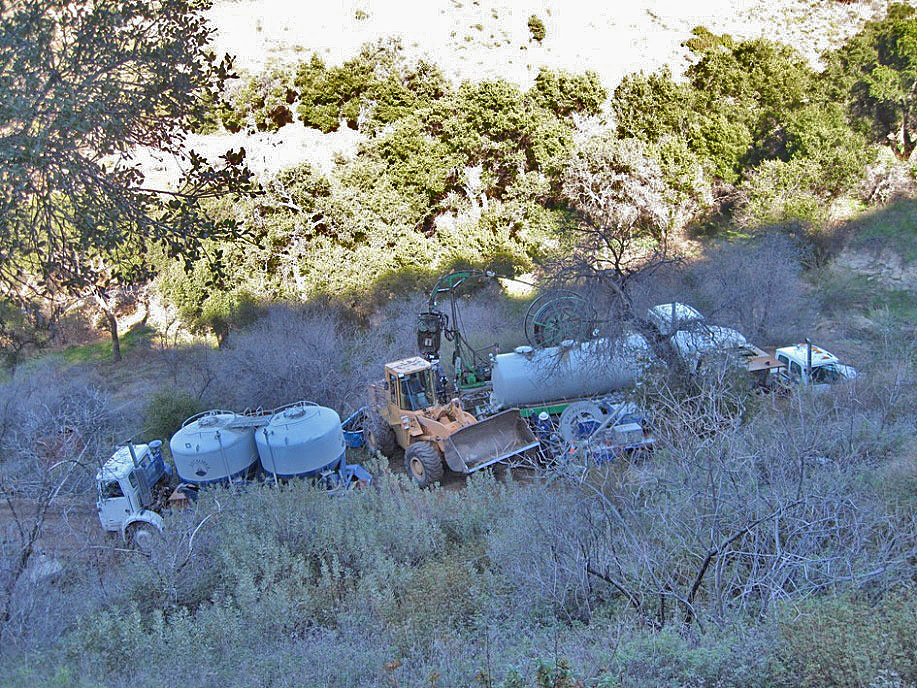
(12/20/2011)
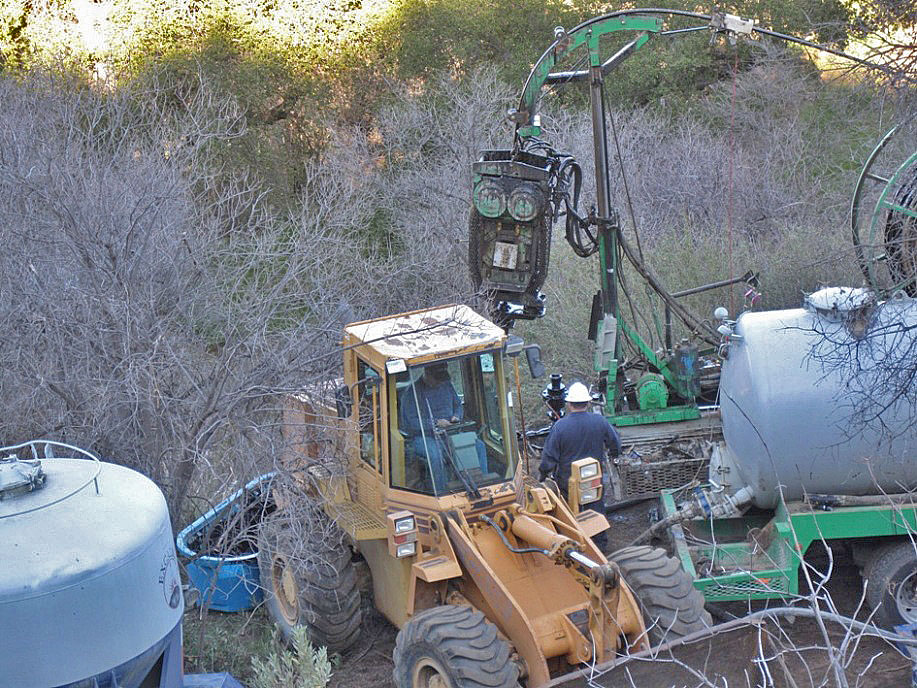
Closer view showing part of tube reel on the right, the curved goose-neck or guide arch for the coiled tubing, and the injector head. The injector head contains the mechanism to push and pull the coil in and out of the bore hole. (12/20/2011)
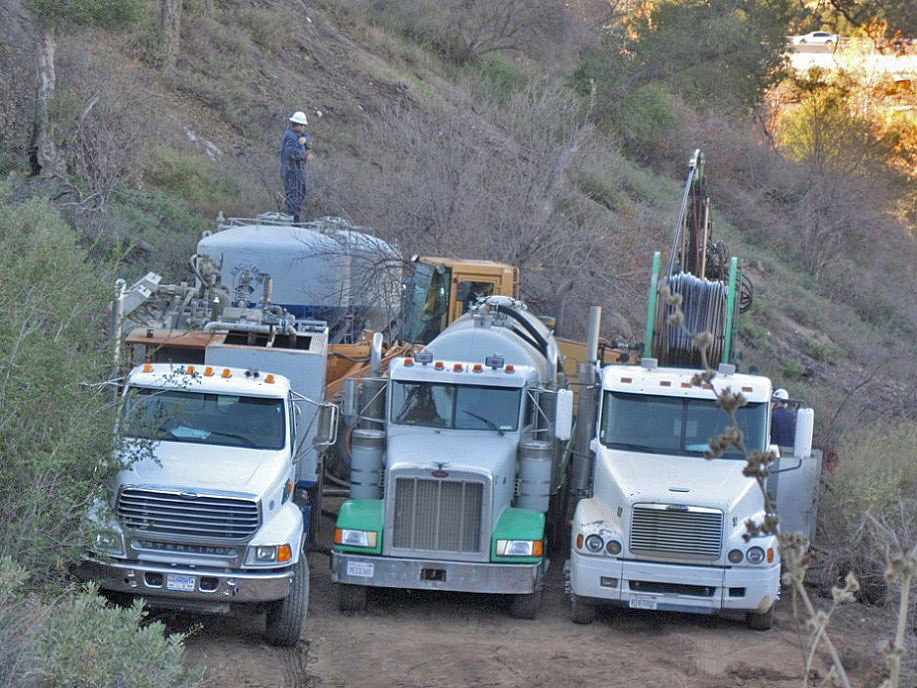
In the front from right to left is the coiled tube truck, the water truck, and the cementing truck. A yellow loader is behind the three trucks. Behind that, with the man standing on top, is the bulk cement truck. (12/20/2011)
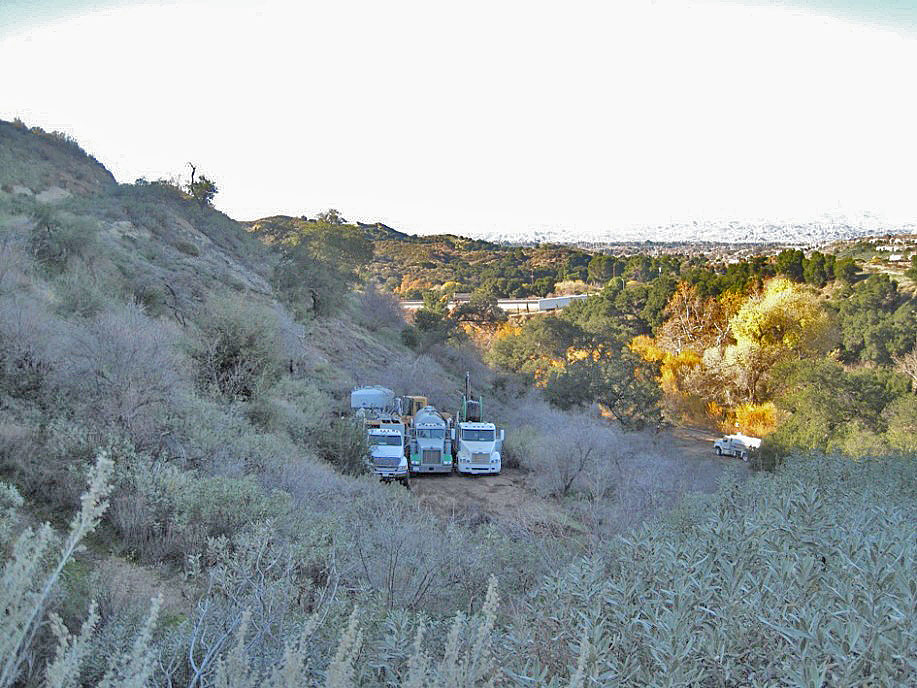
Late in the day the trucks are still parked at the well site with what looks like a water truck below near the creek bed (12/20/2011)
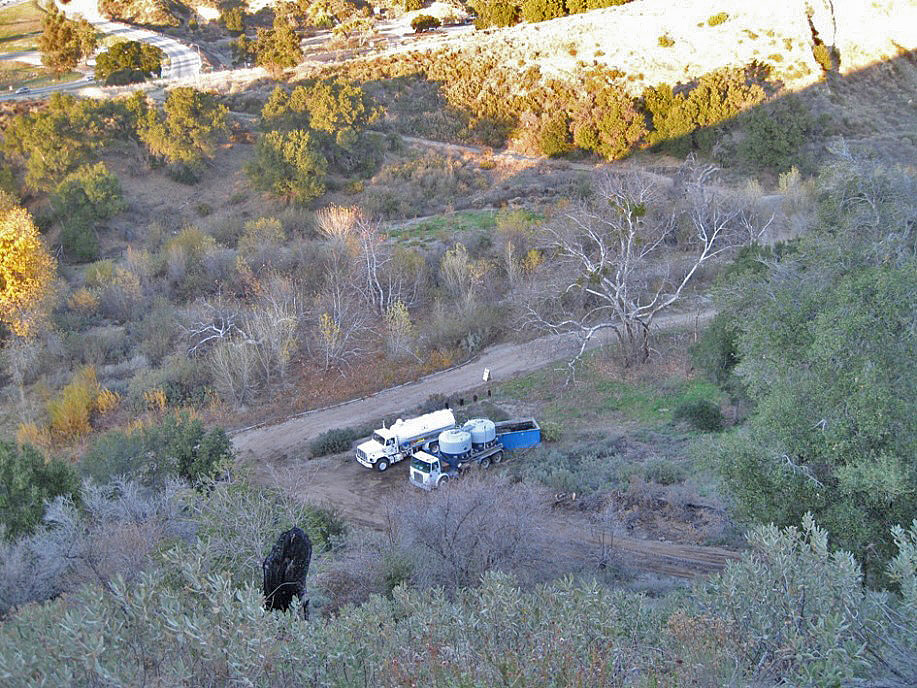
The bulk cement truck now parked below the well site next to the water truck (12/20/2011)
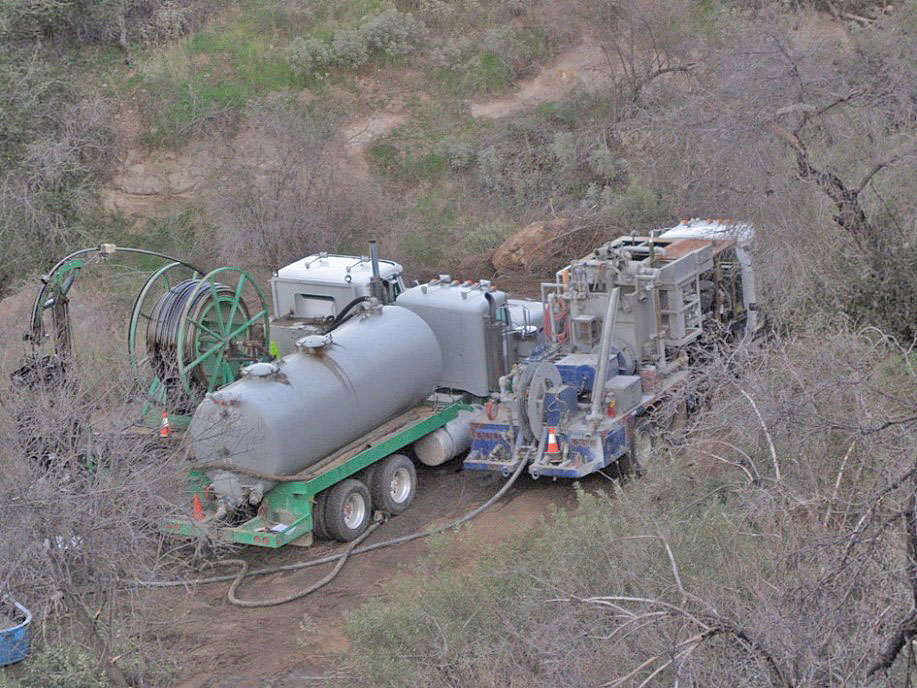
The coiled tubing truck, water truck, and cementing truck still parked at the well site (12/20/2011)
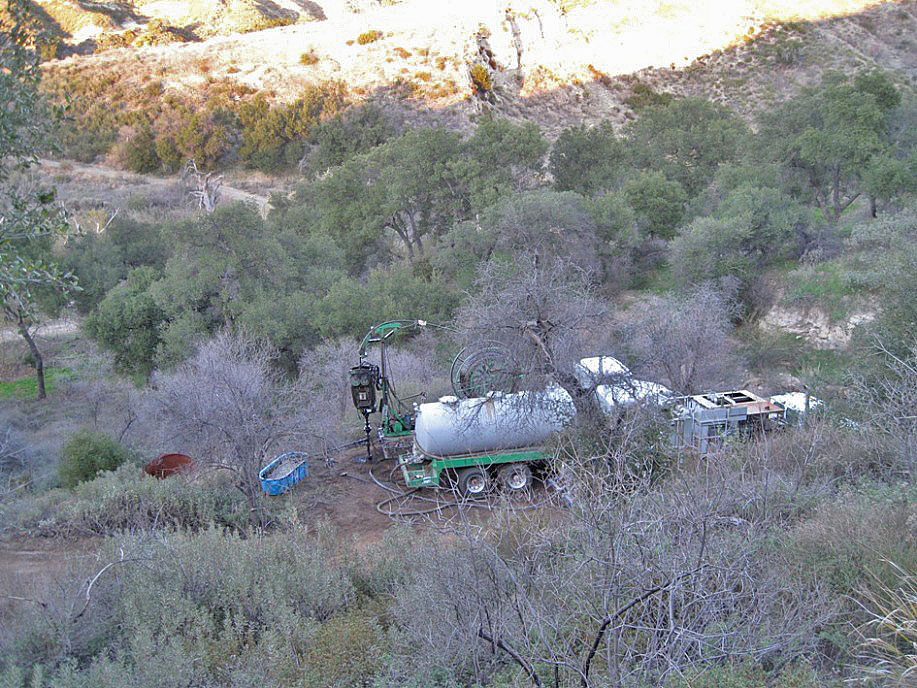
The blue oval shaped plastic container contains waste oil (12/20/2011)

Pretty messy at the well site (12/20/2011)
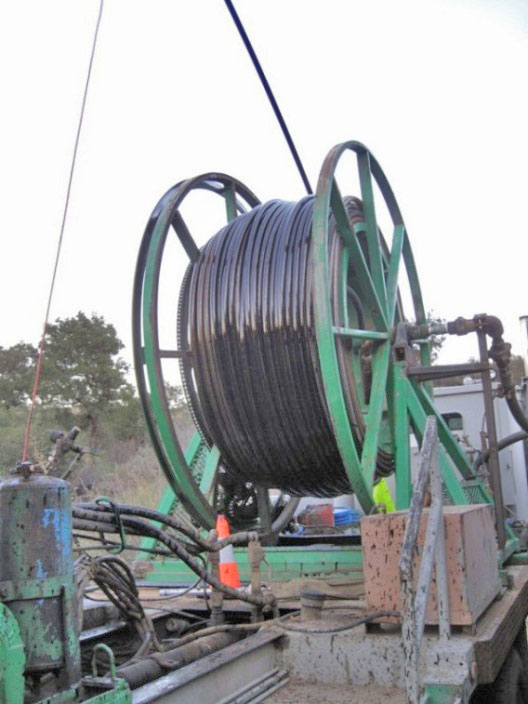
View of the 1.5 inch coiled tubing reel (12/20/2011)
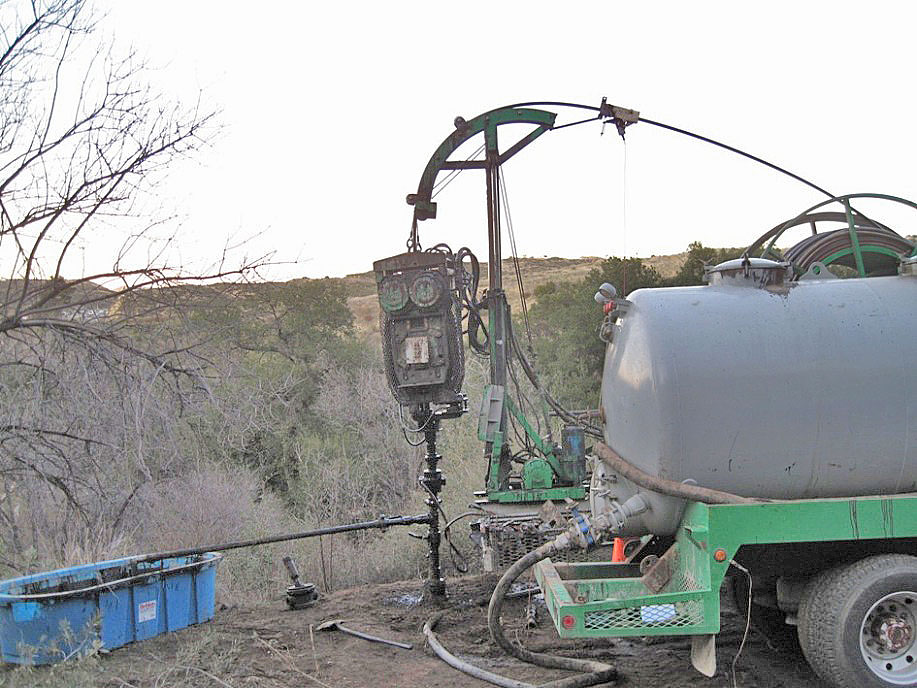
Oil is slowly draining into the blue container (12/20/2011)
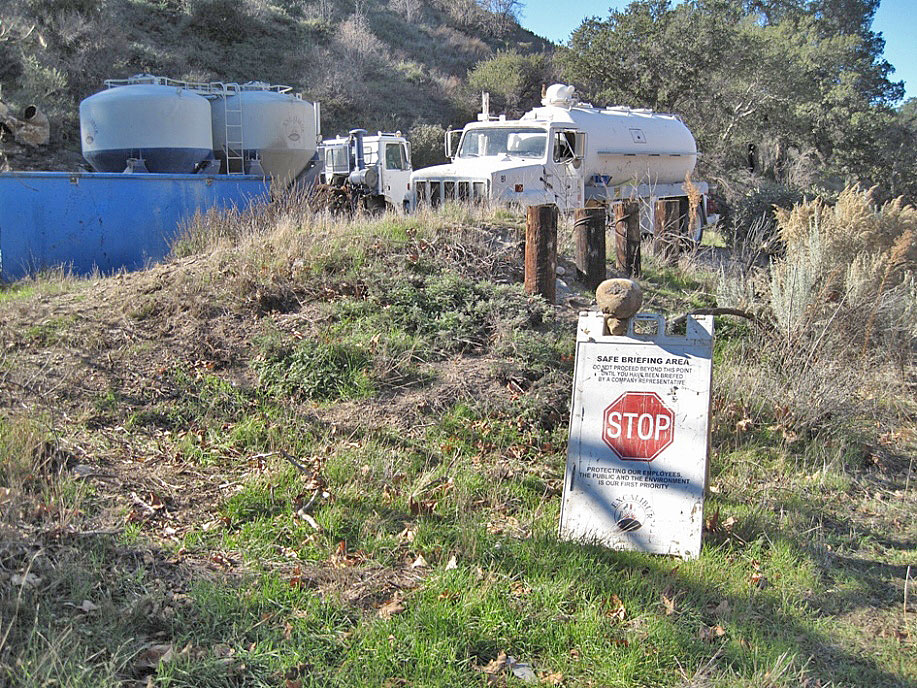
At the creek bed, four days after the previous photos were taken, this sign was set up with the bulk cement truck, water truck, and large blue trash bin in the background. (12/24/2011)
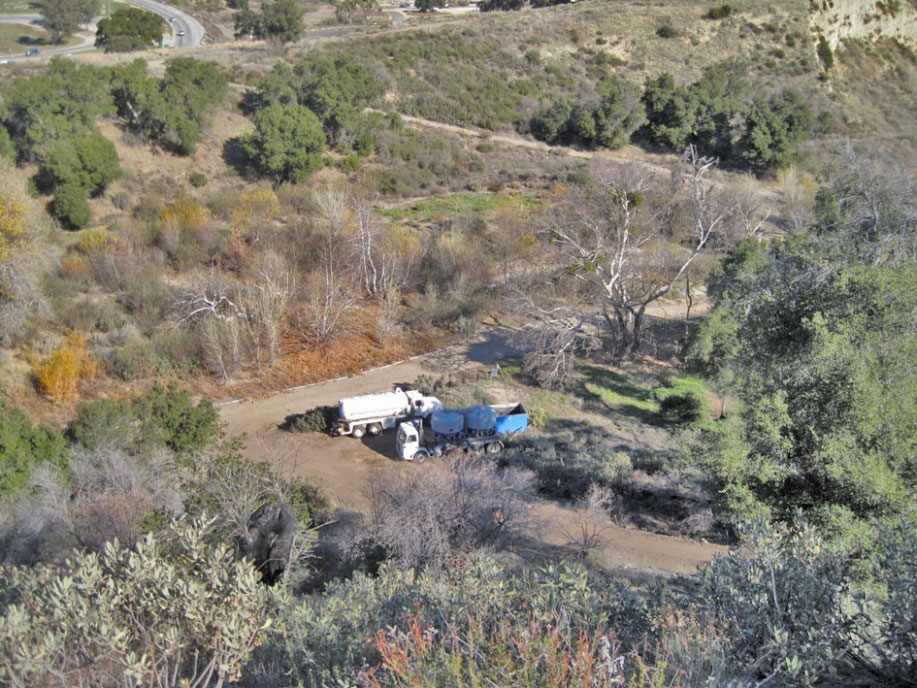
(12/24/2011)
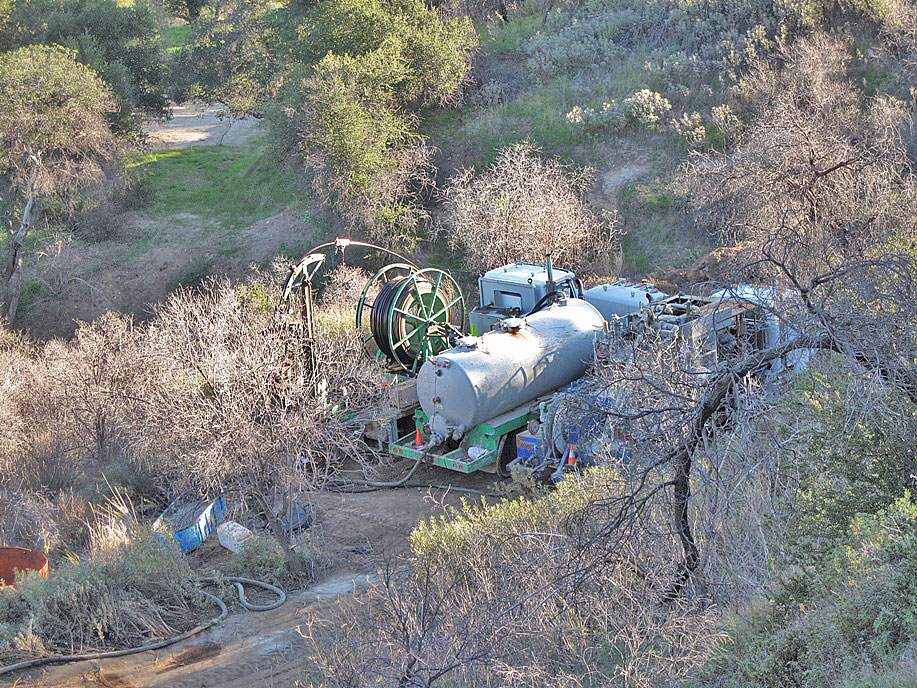
Still doing cement work on 12/24/2011. The total height of the well bore is not just cemented. Just certain depths are, usually at oil, gas, or water bearing beds. This is to keep them from migrating to another bed.
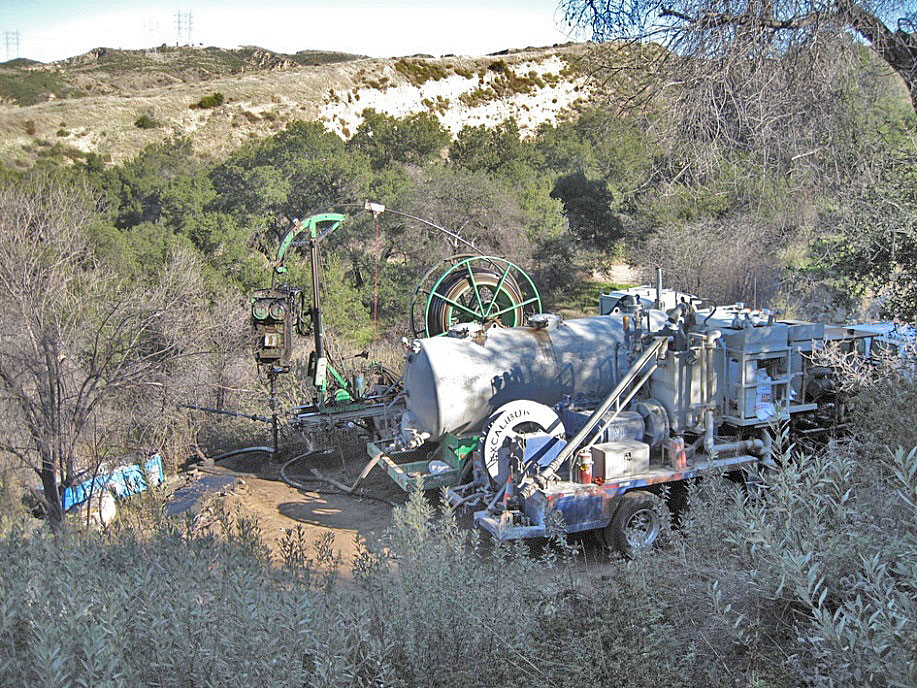
(12/24/2011)
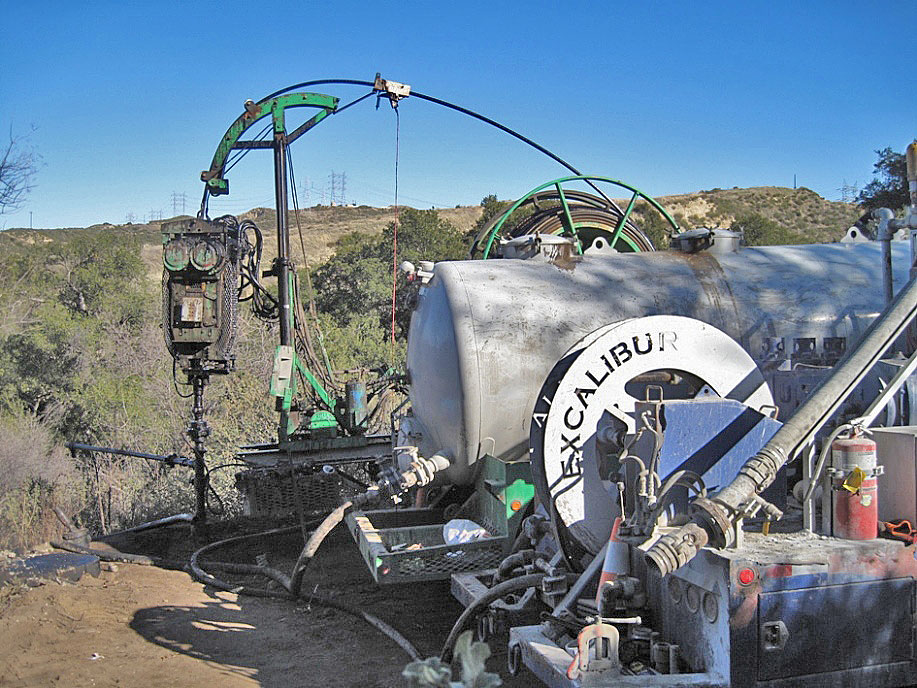
(12/24/2011)
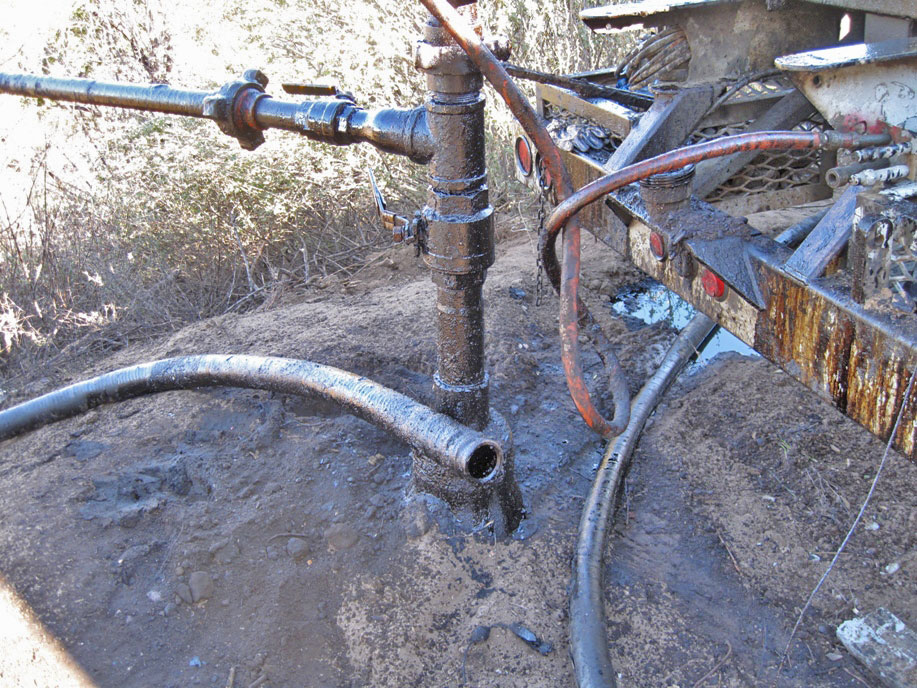
Still pretty messy (12/24/2011)

Three days later, the trucks are gone (12/27/2011)
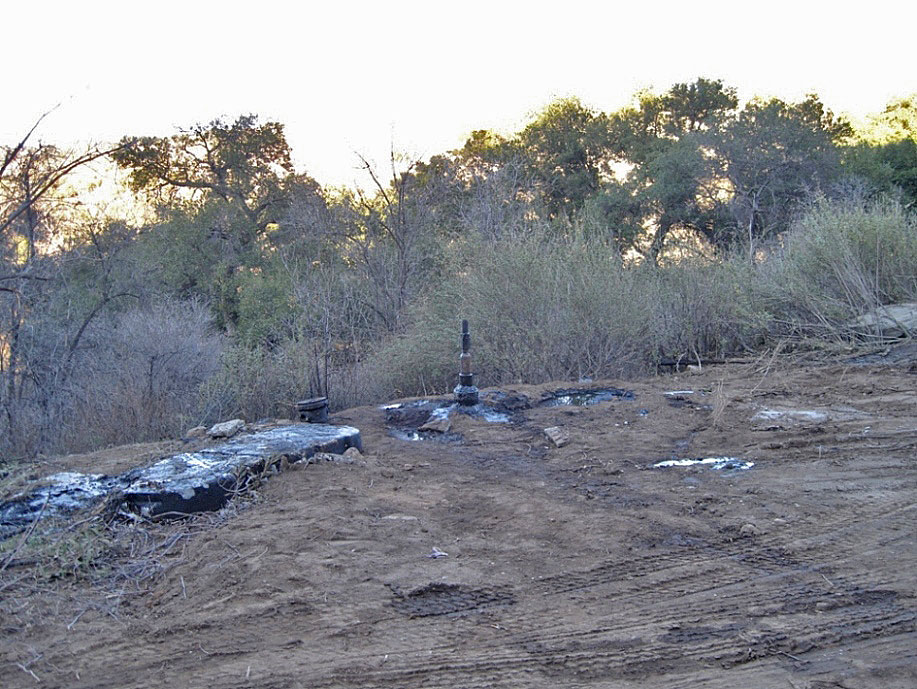
The site is still is oily and the contents of the blue plastic container have been left here in a jello state (12/27/2011)
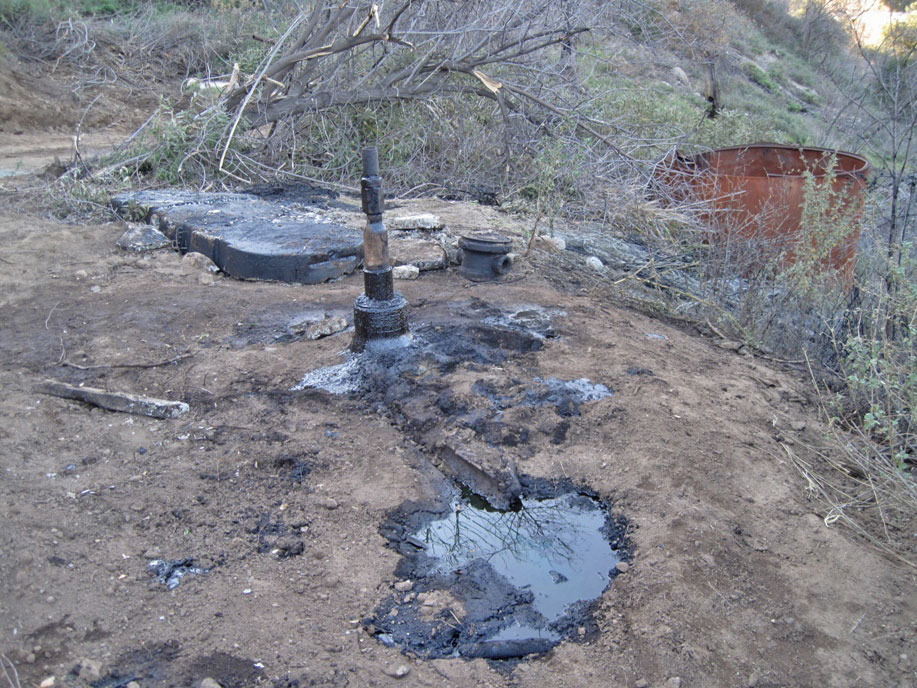
One of the old tanks is still standing below the site (12/27/2011)
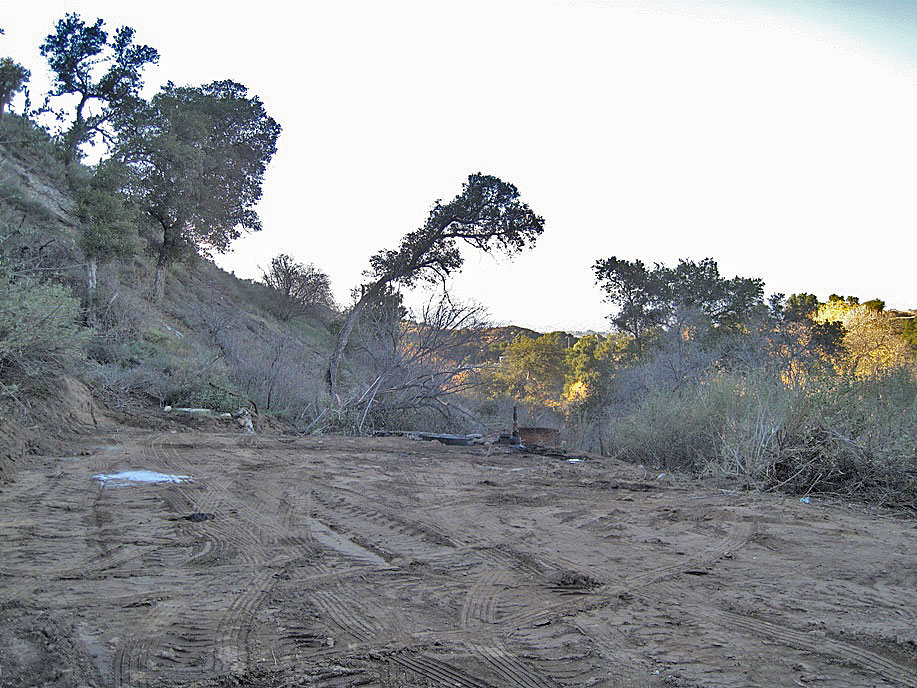
Wider view of well site (12/27/2011)
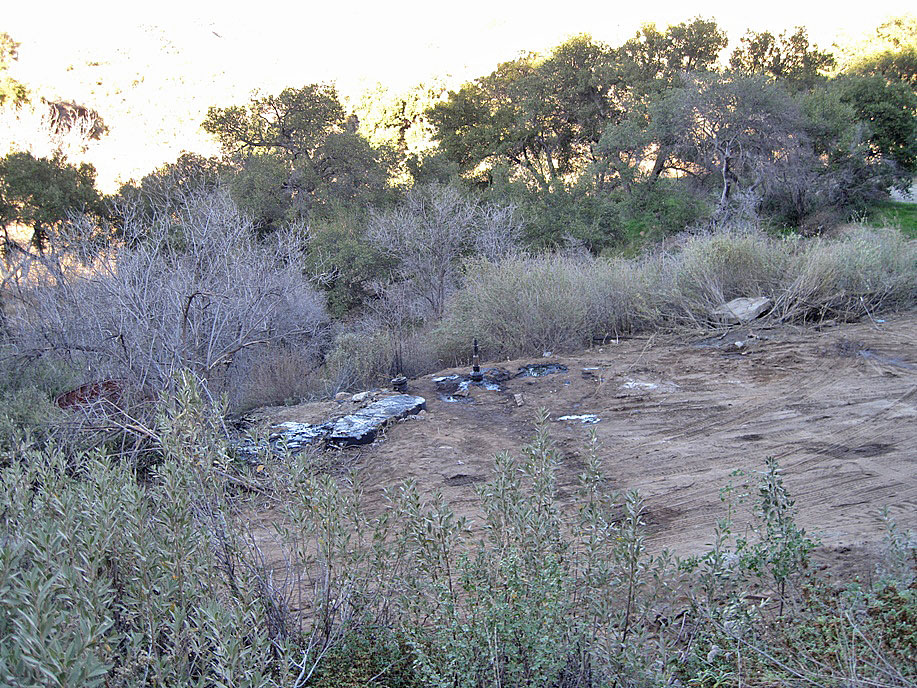
(12/27/2011)
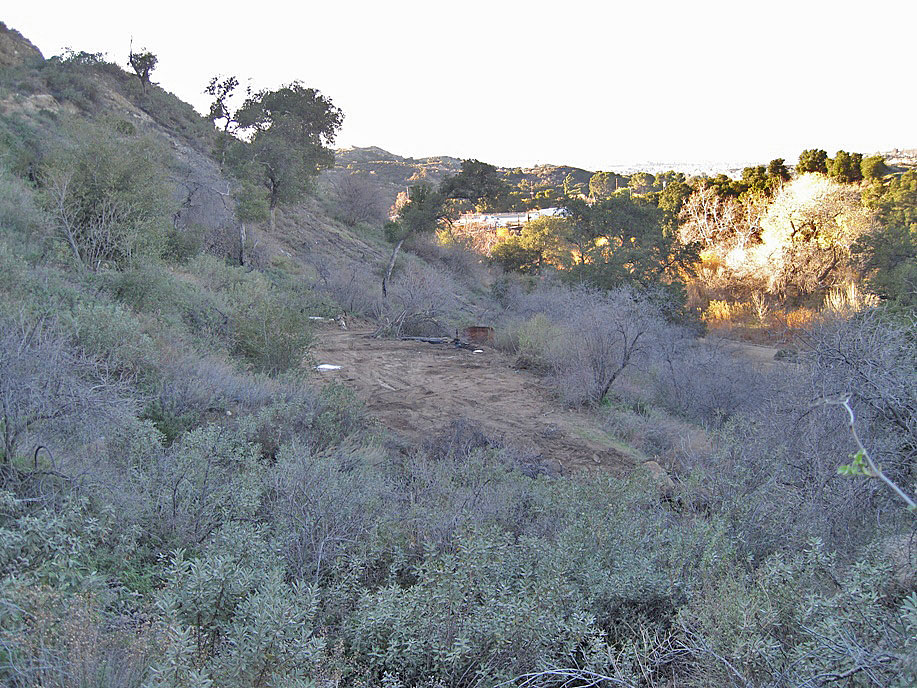
14 freeway in distance (12/27/2011)
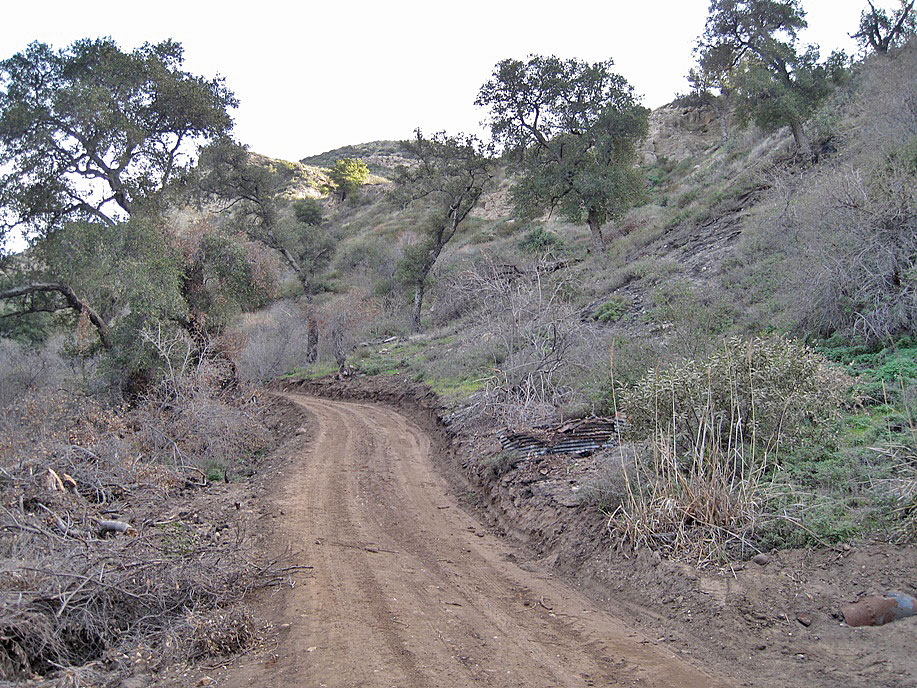
Up to the well site on 12/31/2011. An old squashed tank on the right is still there.
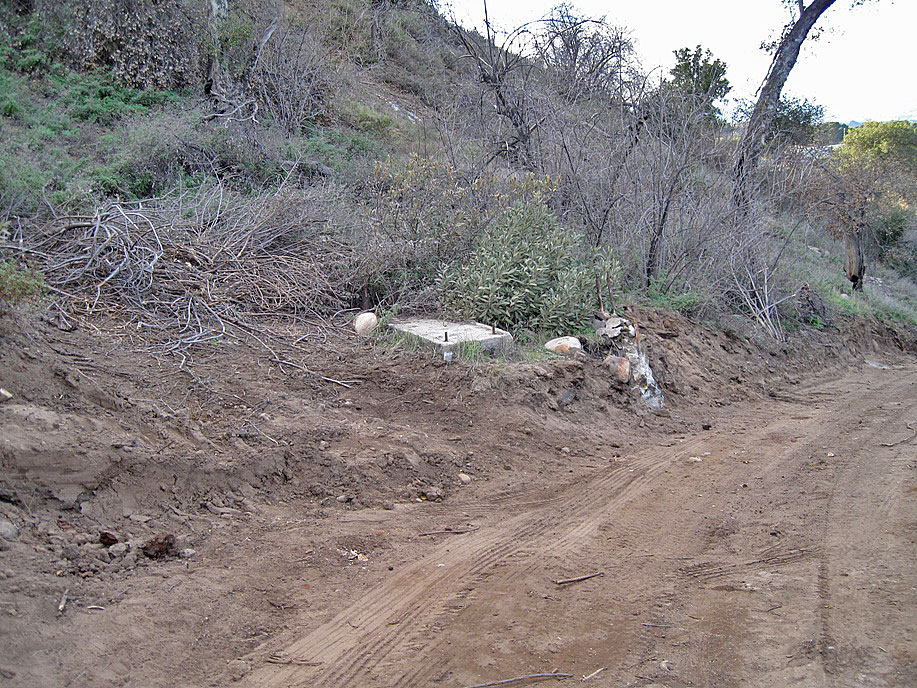
Some of the old concrete base is also still there (12/31/2011)
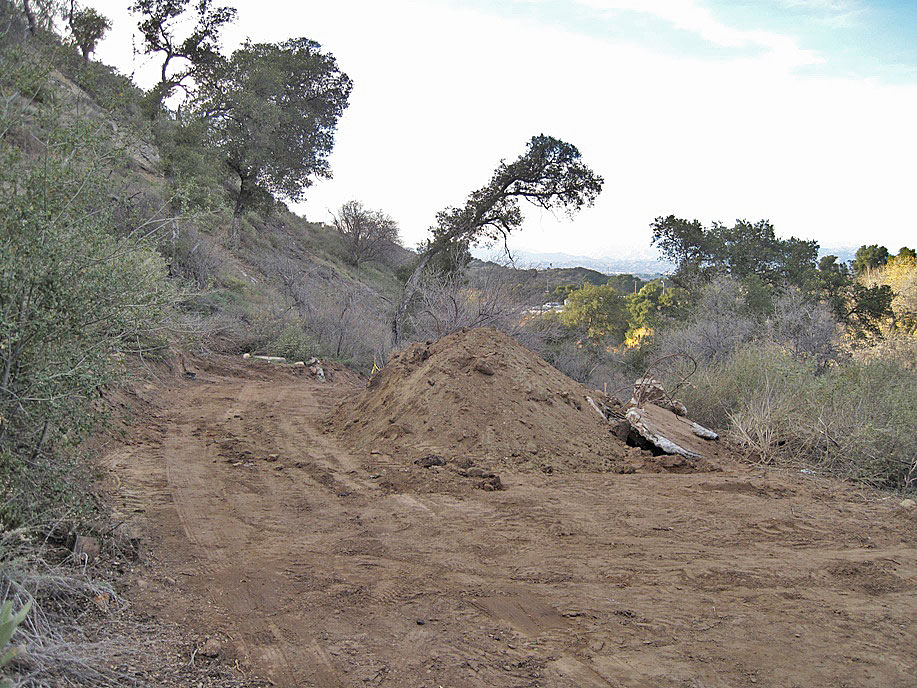
Large pile of dirt (12/31/2011)
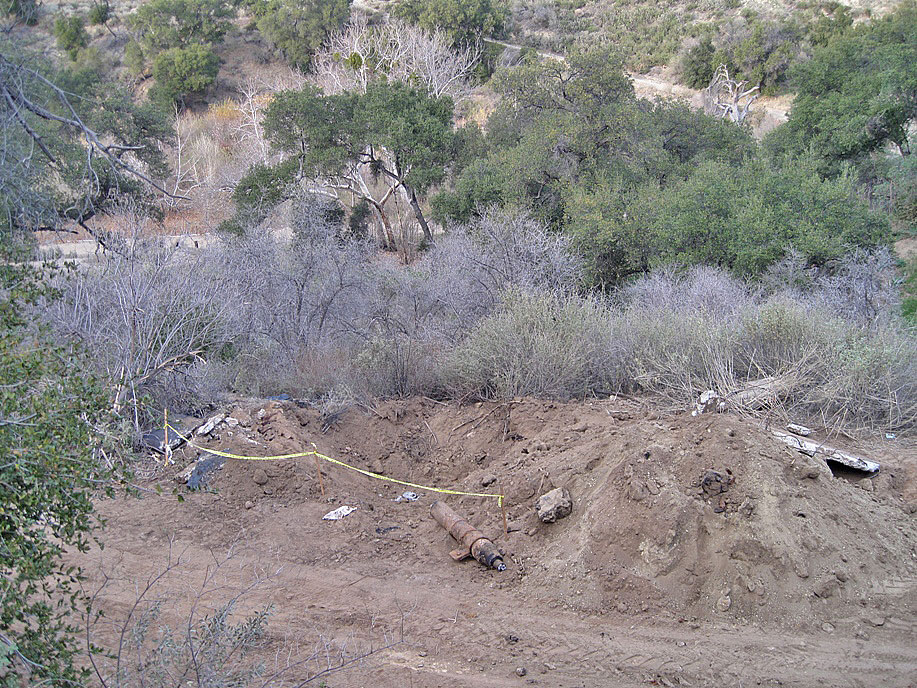
In front of the dirt pile is about a 5 foot deep hole that was dug out around the well. The casing was cut off at the bottom of the hold. (12/31/2011)
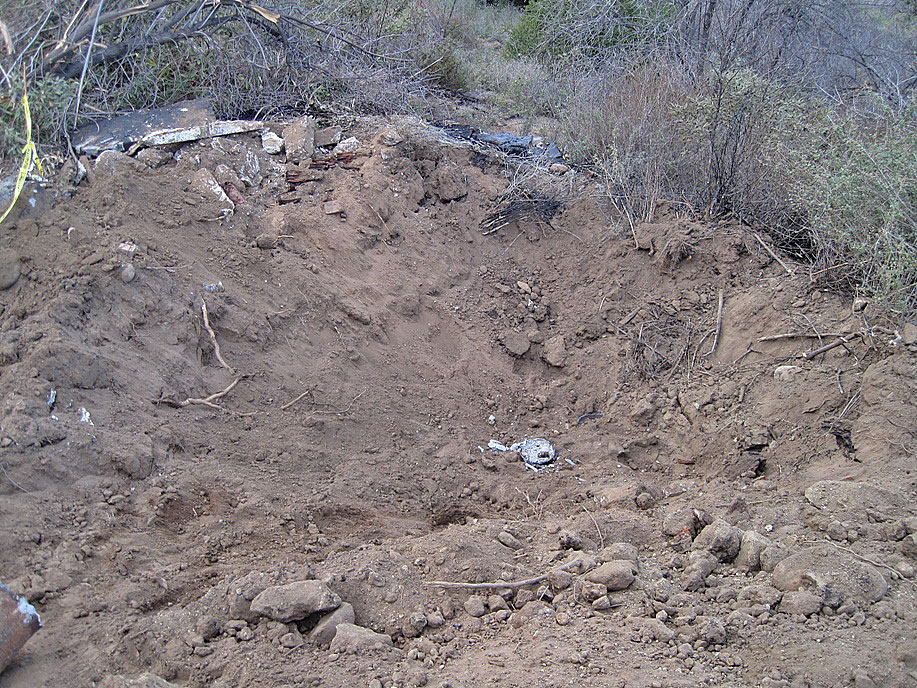
At the bottom of the hole is the cement filled cut off casing (12/31/2011)
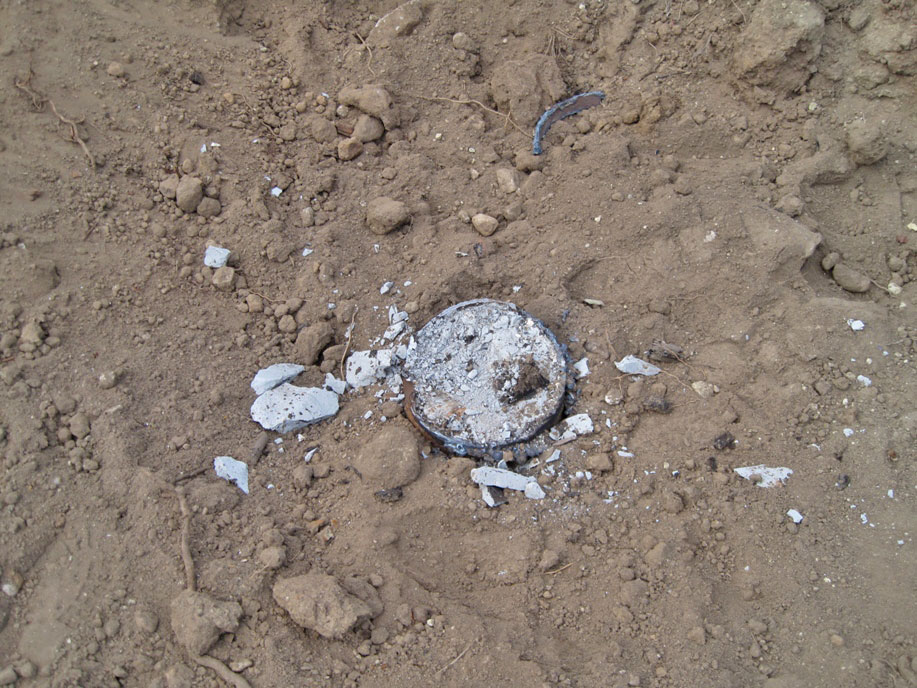
Cut off casing (12/31/2011)
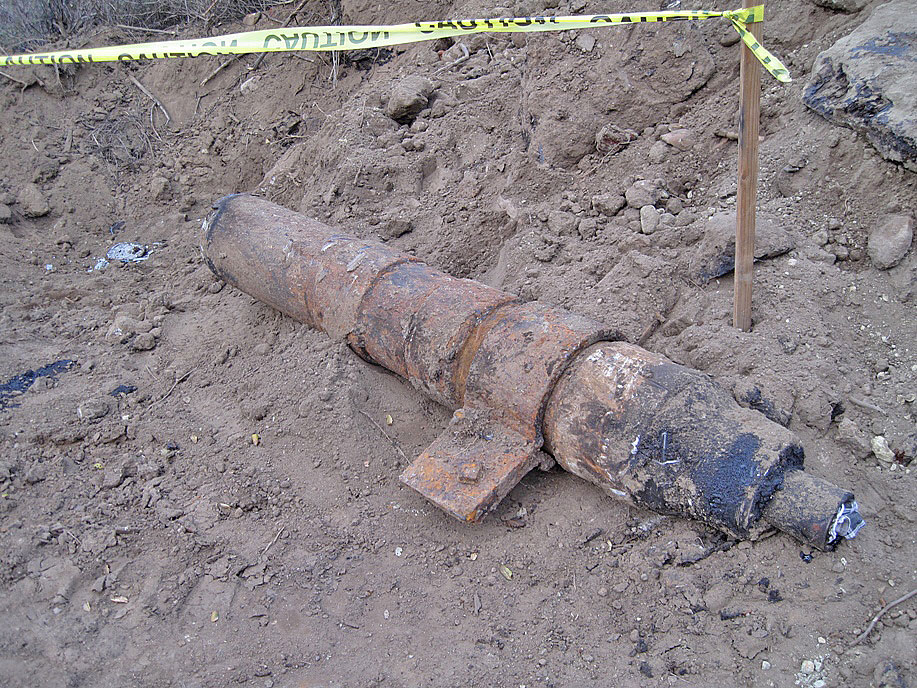
About a 10 foot length of casing was cut off (12/31/2011)
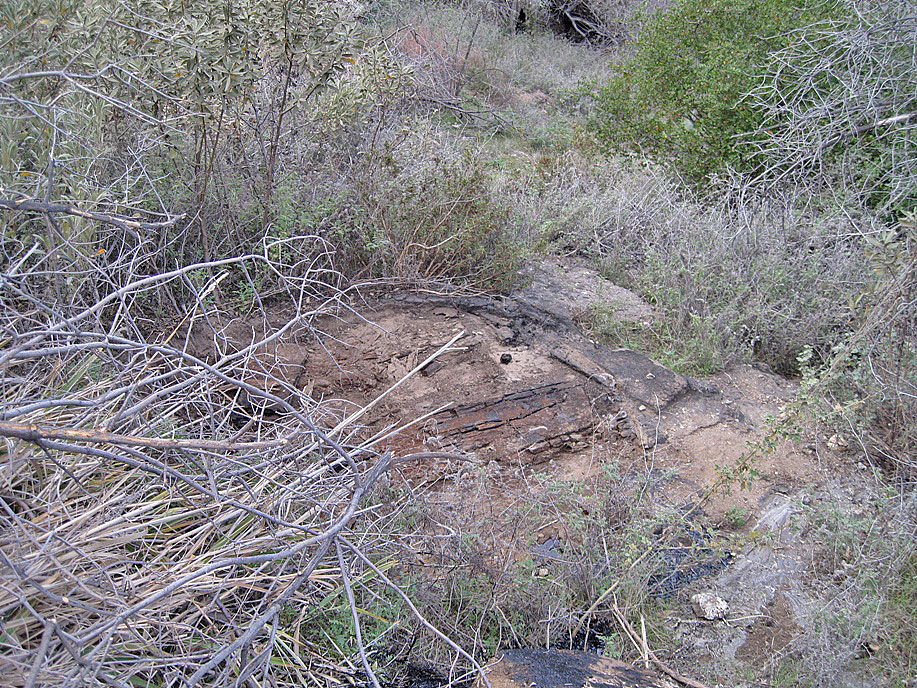
The last standing tank was removed. This was its base. (12/31/2011)

View from the trail above the site (12/31/2011)
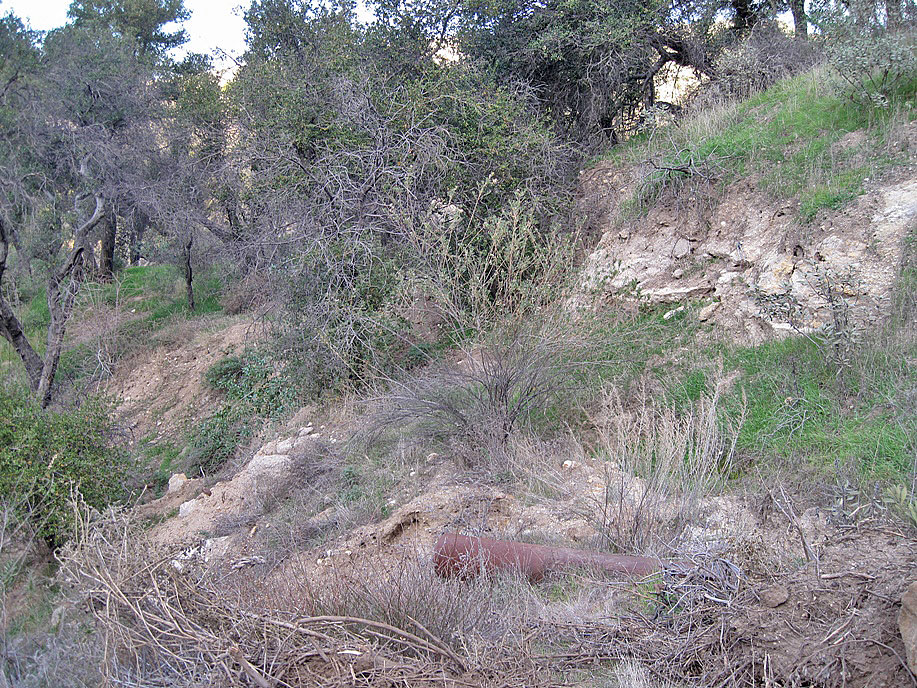
At the eastern edge of the site was the original road to the well. The large pipe was for drainage of the little gulley that the road passed over. (12/31/2011)
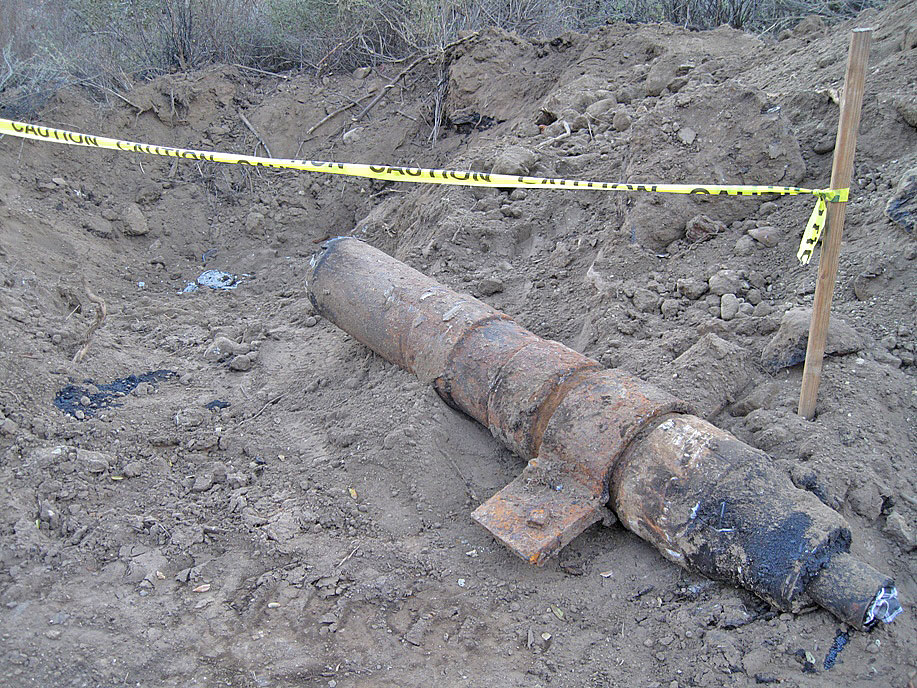
On 1/2/2012, the hole hasn't been filled in yet
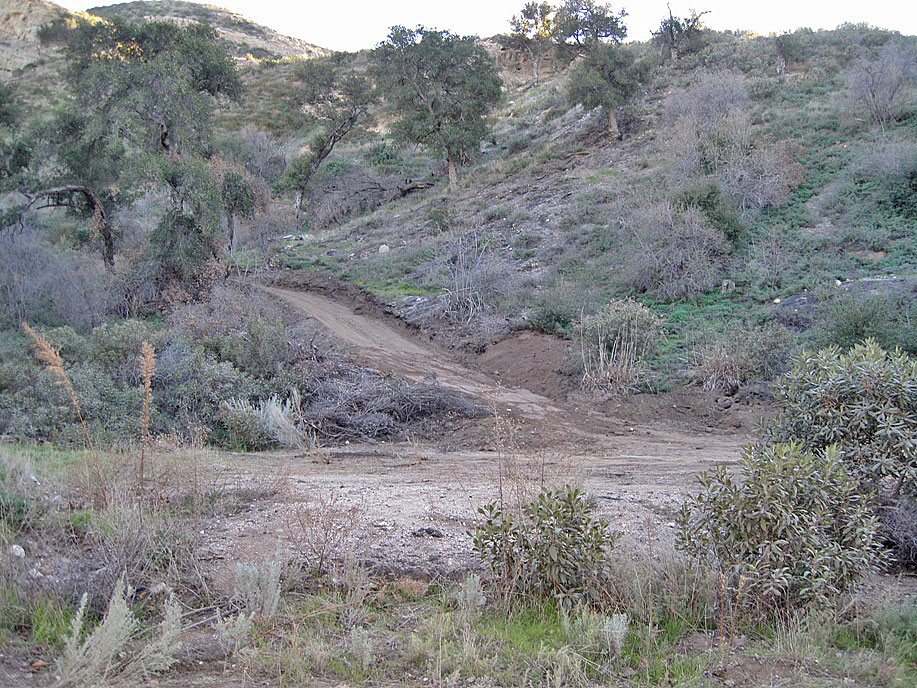
By 1/4/2012, the squashed tank on the right side of the road up to the site has been removed
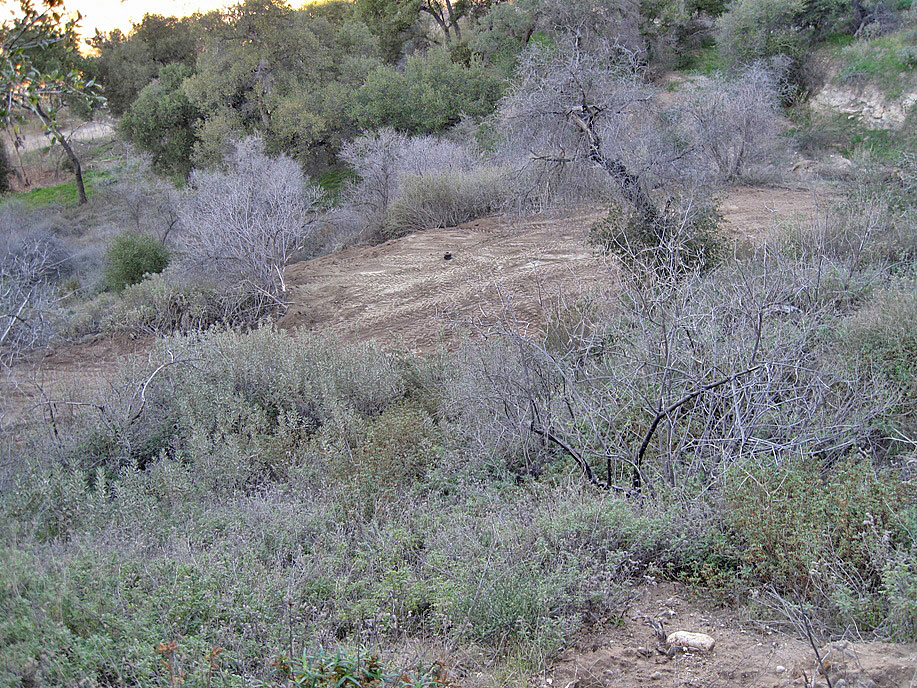
The hole has been filled and the site has been cleaned up (1/4/2012)
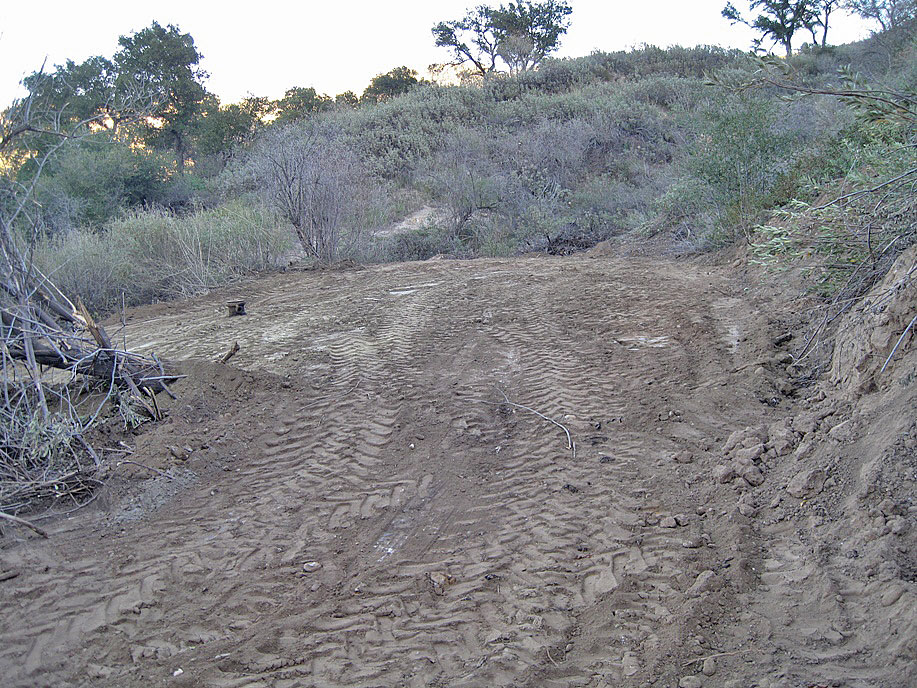
Closer view of site. A well head has been left behind to show where the well was. It was just laying on the ground. (1/4/2012)
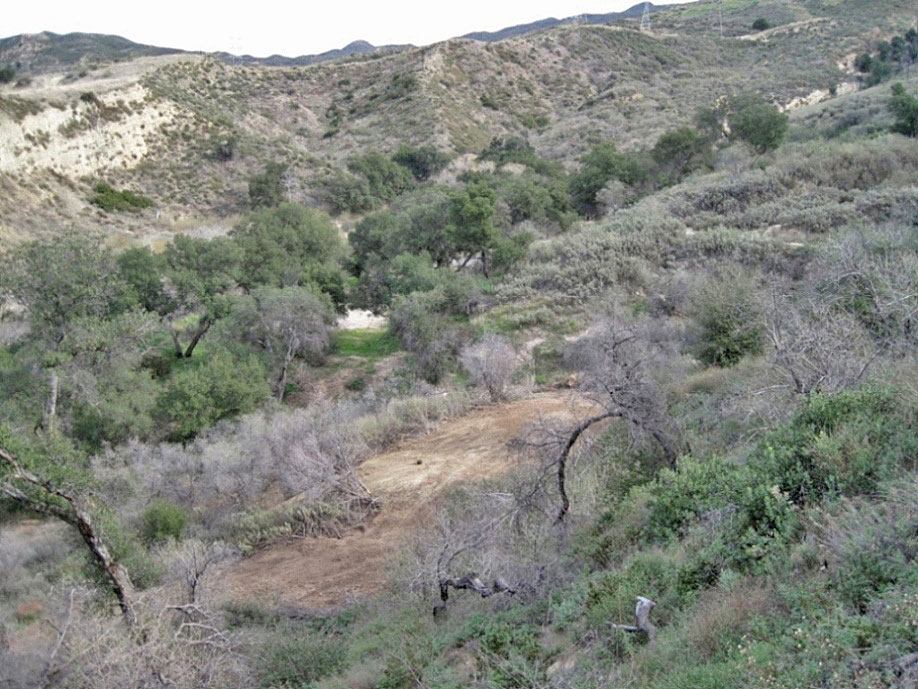
The site on 1/14/2012. The well head hardware is still there.
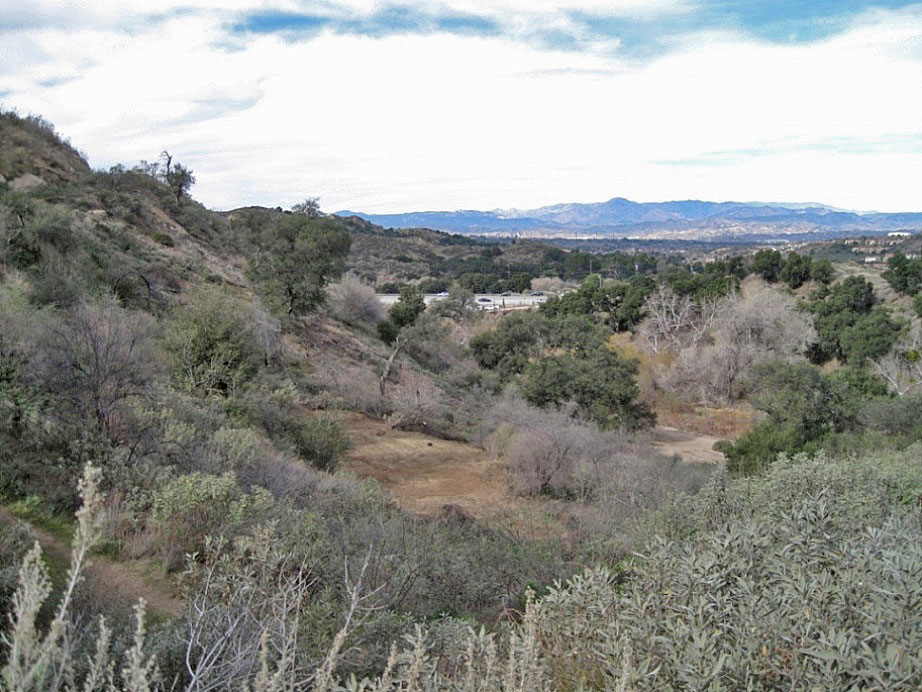
View toward the 14 freeway (1/14/2012)
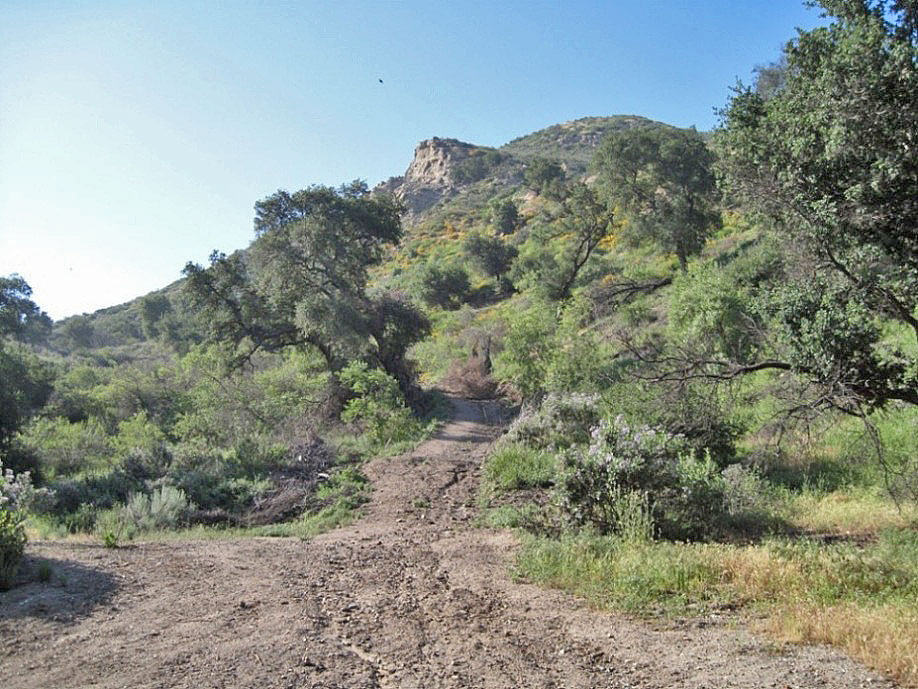
The road up to the well site on 5/13/2012
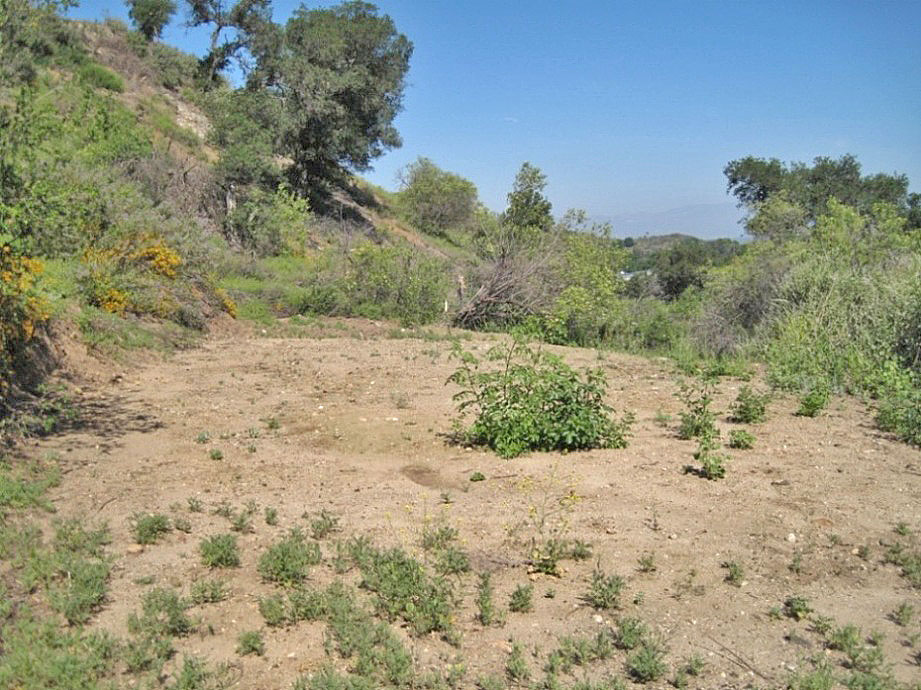
The site is beginning to grow back and the well head hardware is gone (5/13/2012)
























































